An Easy, Authentic Eighteenth Century Petticoat
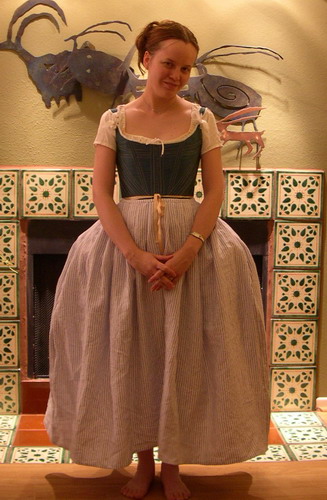 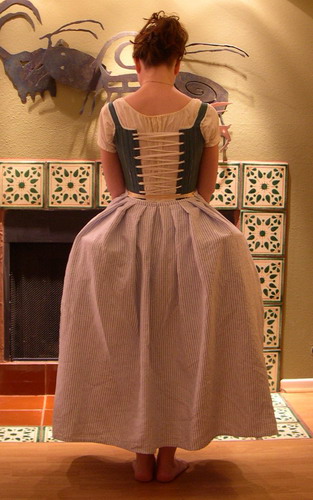 |
| A linen striped petticoat, made to go over pocket hoops. The hem is in the straight of grain and it's leveled at the waist, using only measurements. |
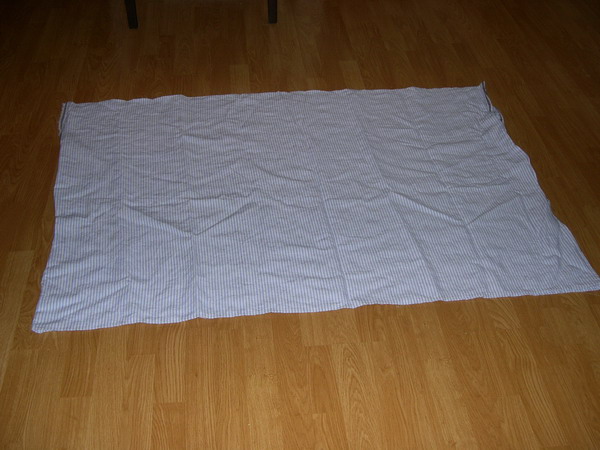 First, sew the side seams of the petticoat. If you're using fabric 55 or 60 inches wide, just make two side seams and leave the last 9 or 10 inches open. If you're using narrower fabric, you'll need to use three panels and make slits that length at the sides. Hem the petticoat. |
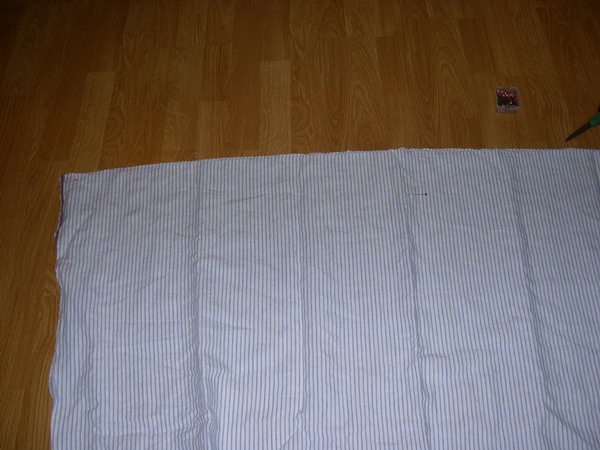
Next, mark for length. If your petticoat is
going to be the same length all around, you can skip right to pleating. My example is a petticoat meant to go over pocket hoops. |
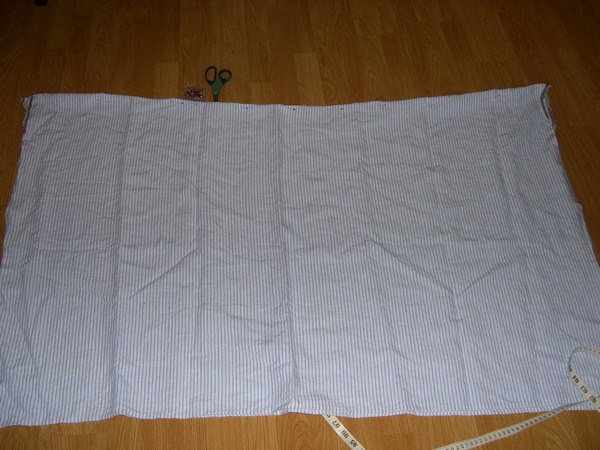 Now, cut or fold the excess. I prefer folding to cutting as it leaves more room for error. And in the 18th century, it would make it easier to rework into something new if the styles changed. |
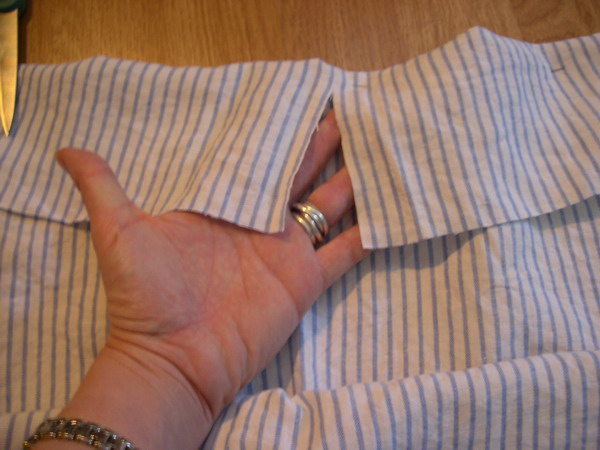 If you have a large difference, you might need to cut a slit at center front to make the fold easier. |
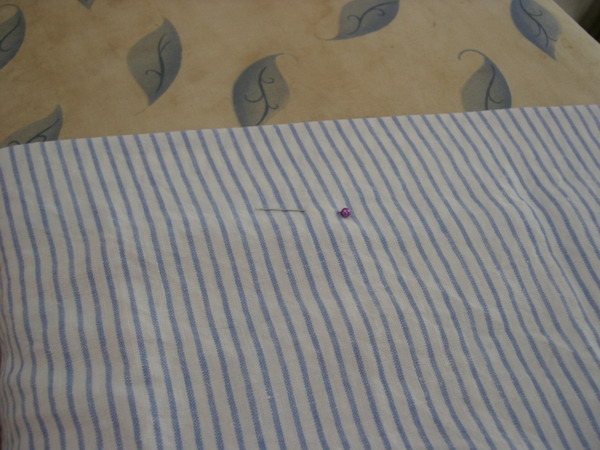 Iron the top fold in place so you don't have to worry about pins while pleating. |
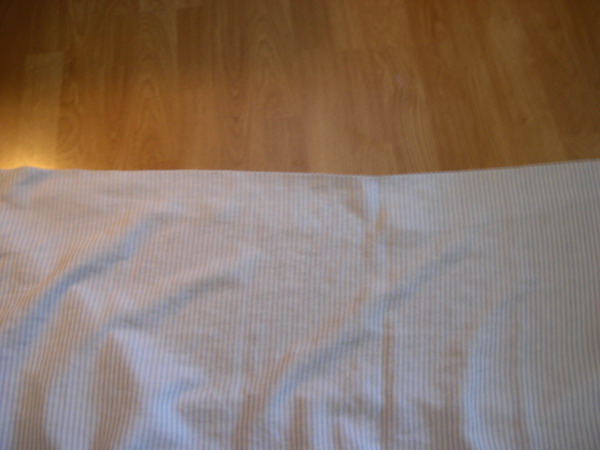 The ironed top edge. |
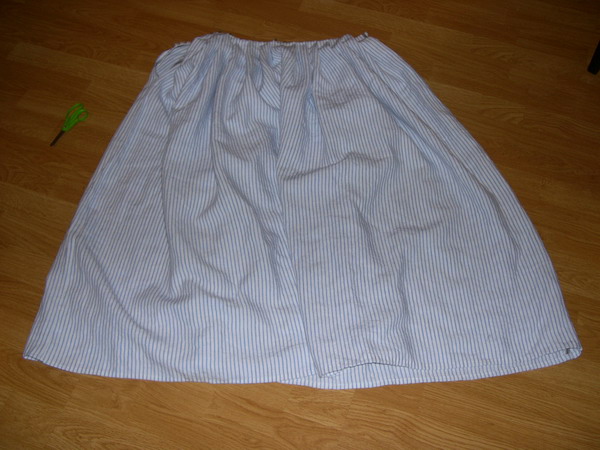 Pleat the petticoat. The front and back should each be a little larger than half your waist measurement, maybe two or three inches. You should have a box pleat at center front, the rest of the pleats are knife pleats facing toward the back with an inverted box pleat at center back. |
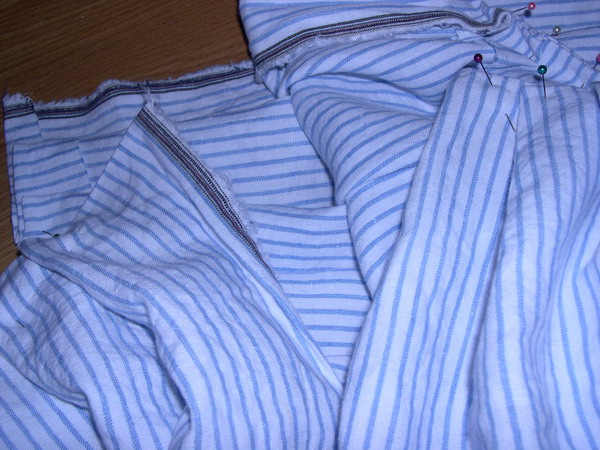 The opening next to the pleats. I like
to fold the front under and leave the back flat so when you put the front over the back, it forms a pleat in the same manner as the others. |
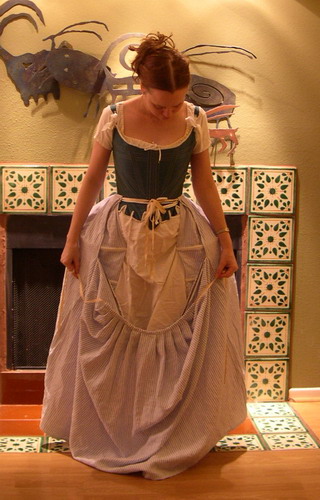 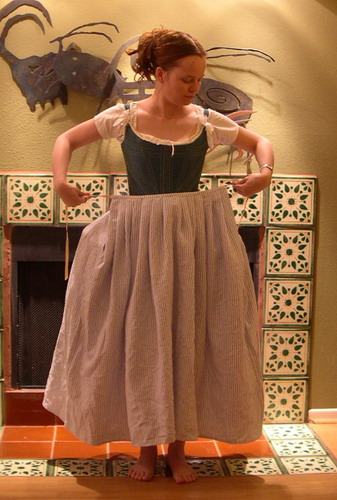  |
|
Putting the petticoat on. First, tie the back. Notice how it comes a little past the sides to the front. |
My Costumes
The Eighteenth Century
 I'd
like to go home!
I'd
like to go home!